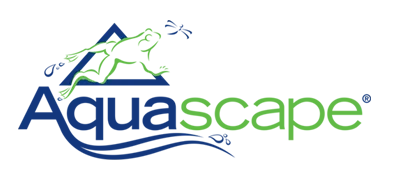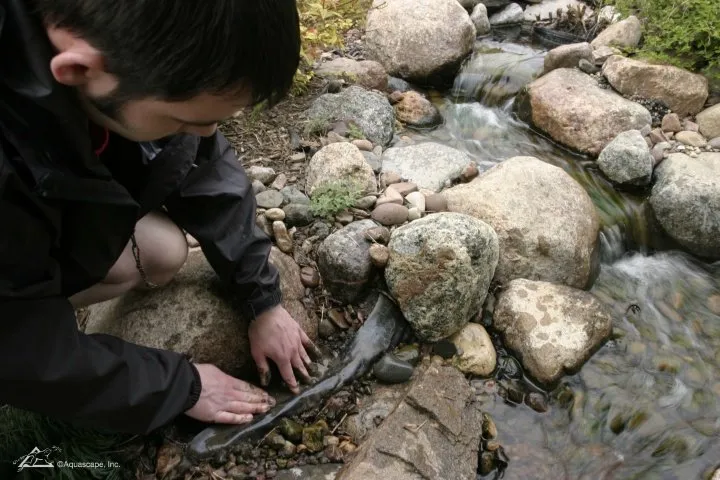Unfortunately, ponds leak from time to time. Fortunately, they’re typically easy to fix. The majority of leaks occur in a stream or waterfall and aren’t hard to find. And sometimes during a period of hot summer weather, it might appear that the pond has a leak but evaporation is to blame. Follow our tips below to help you find and eradicate your leak so you can get back to the business of enjoying your pond.
Is It Really a Pond Leak?
The first step in your leak detection process is to distinguish between a leak and water evaporation. Evaporation happens naturally in every pond and varies with the time of year. It’s also heavily dependent on the climate in which you live. For example, if you live in Phoenix, you can expect to lose up to three to five inches of water every week during the heat of summer. If you live in the Great Lakes area, you’re likely to experience just one to two inches of evaporation each week.
Step One: Finding the Leak
When you lose more water in a week than what’s typical of natural evaporation, you probably have a leak and need to do a little detective work. Most leaks occur alongside the waterfall or streambed and can be easily spotted. Check alongside the waterfall or stream for wet spots in the soil or mulch. If you find one, you can dig in and around the rocks that border the area to see if the water is inadvertently finding its way over the liner’s edge. Then, simply build up the edges enough to prevent water from flowing out of the waterfall or stream. You can use soil, rock, and/or gravel to accomplish this. You can also call your installer and have him do it for you, but it’s fun to feel like a kid again and play in the rocks and dirt.
Step Two: What If the Leak Isn’t in the Stream?
If you don’t find a wet spot in the soil or mulch next to your waterfall or stream, it’s time to move onto step two in your detective process. Turn off the waterfall and keep an eye on the water level in your pond. When the water level stops dropping, you can bet your bottom dollar that the leak is immediately at, or just above that level. It’s possible the water is finding its way out of your pond along the shoreline. This can happen due to plantings or foot traffic near the edges. Simply build up the edge with soil, rock, and/or gravel to prevent leakage.
Step Three: It Might Be the Plumbing
If the water level drops to a point that it’s about even with the skimmer opening, then the pond itself is holding water and you probably have a problem with the skimmer faceplate. Fixing the leak could be as easy as re-sealing the faceplate. However, if the water in your biological filter drains out, then the pond leak is in the plumbing.
If you built the pond yourself, you might want to wrestle with fixing this type of leak on your own. But if you hired a professional to install your water feature, it’s probably best to have them come out and fix it for you. By doing the detective work yourself, it will take less time for the contractor to determine where the problem lies.
Step Four: It’s in the Liner
If the water drops below the skimmer opening, then the problem is somewhere in the liner. To find the leak, you’ll need to check the liner right at the new water level. You might have to move a few rocks around in order to locate a small tear or a gouge in the liner. Once you find it, patch it up like you would patch the inner tube of a bicycle tire using a pond liner patch kit. Fill the pond back up and be sure to use Pond Detoxifier when re-filling the pond in order to keep your fish from being adversely affected by the tap water.
Back to Normal Pond Life
Typically, all it takes is a little bit of methodical detective work to determine the location of your pond leak. At each stage, the question is whether you want to fix it yourself or hire a pond pro to resolve the problem for you. And remember, most leaks occur around the waterfall which is quickly and easily remedied so you can get back to enjoying your pond and its inhabitants.


